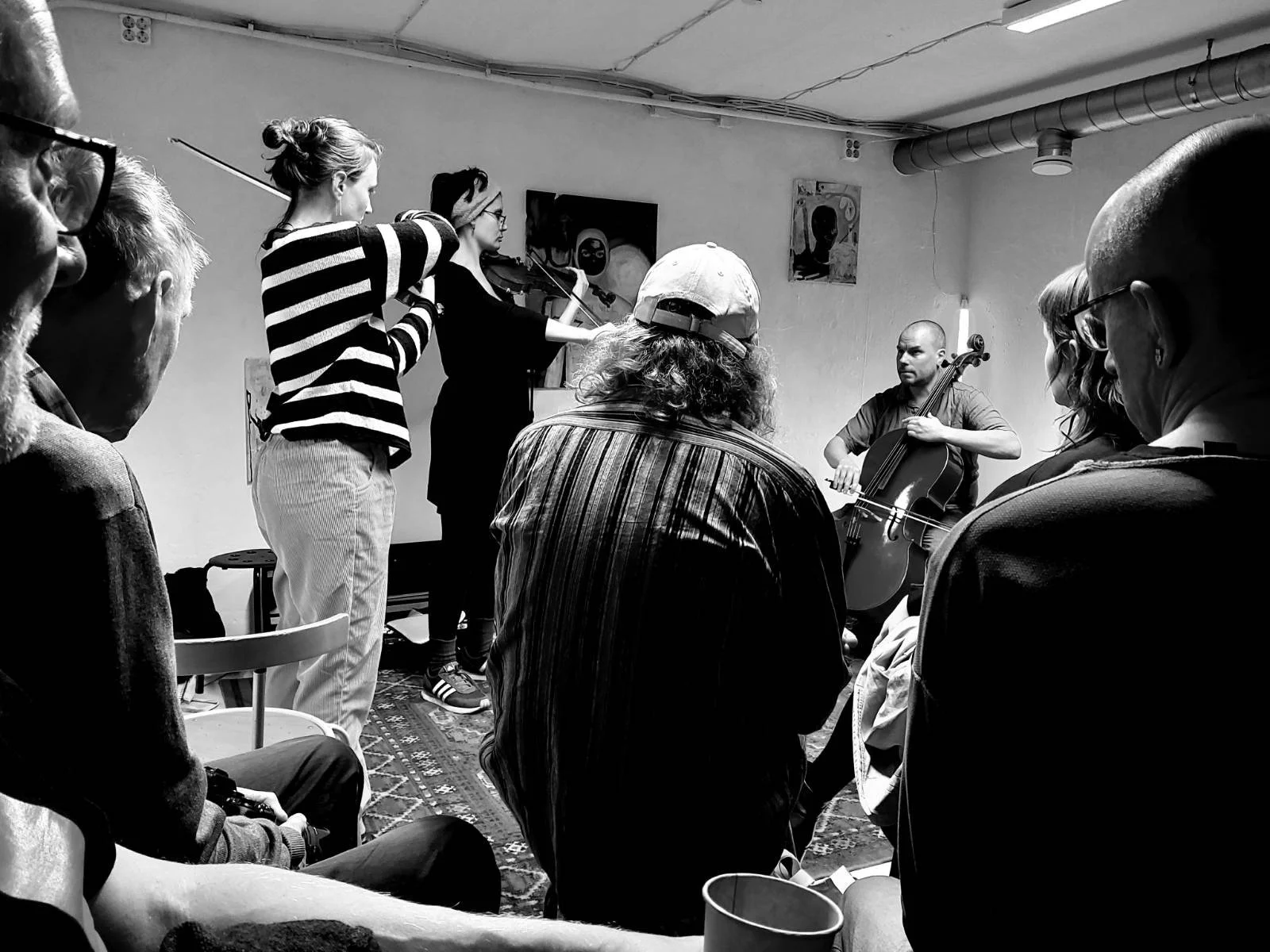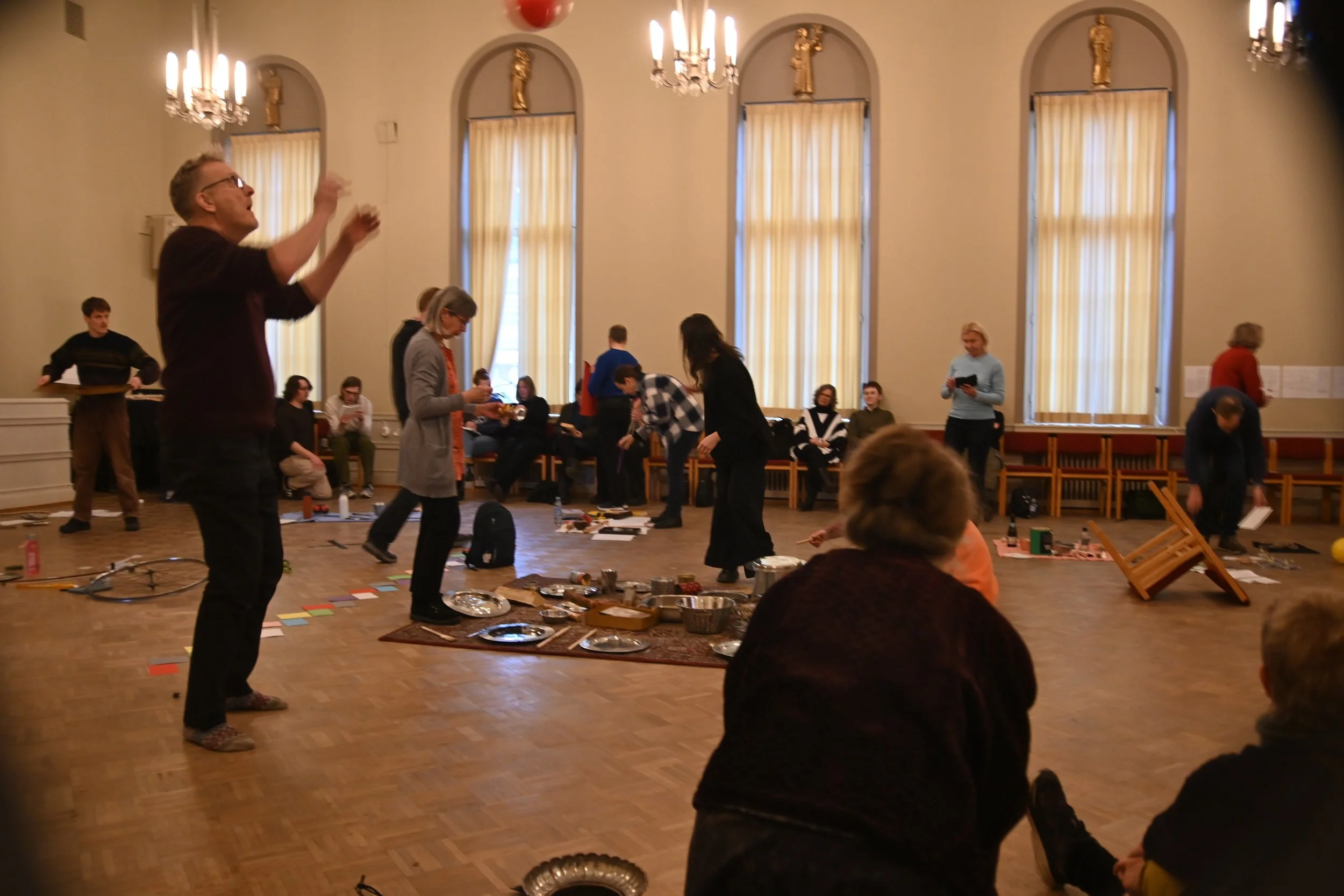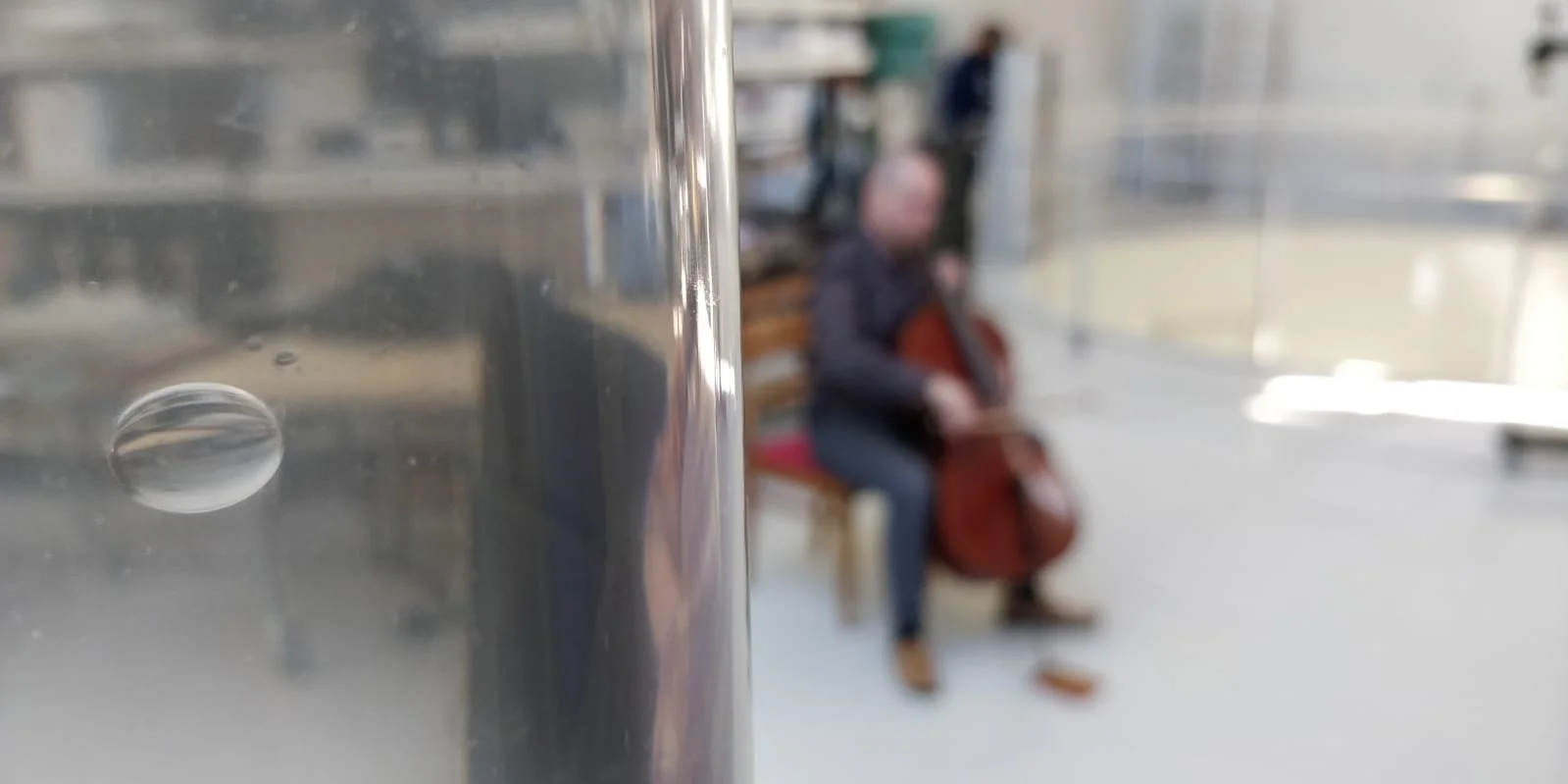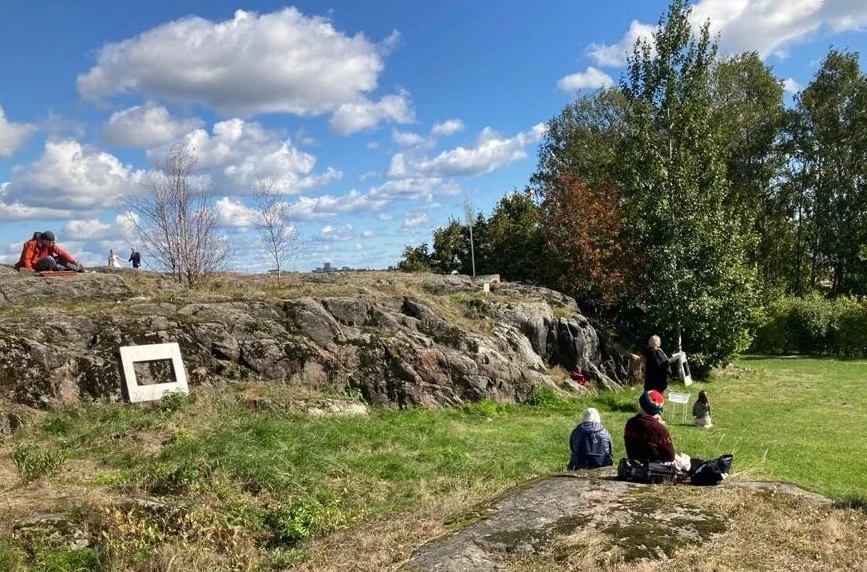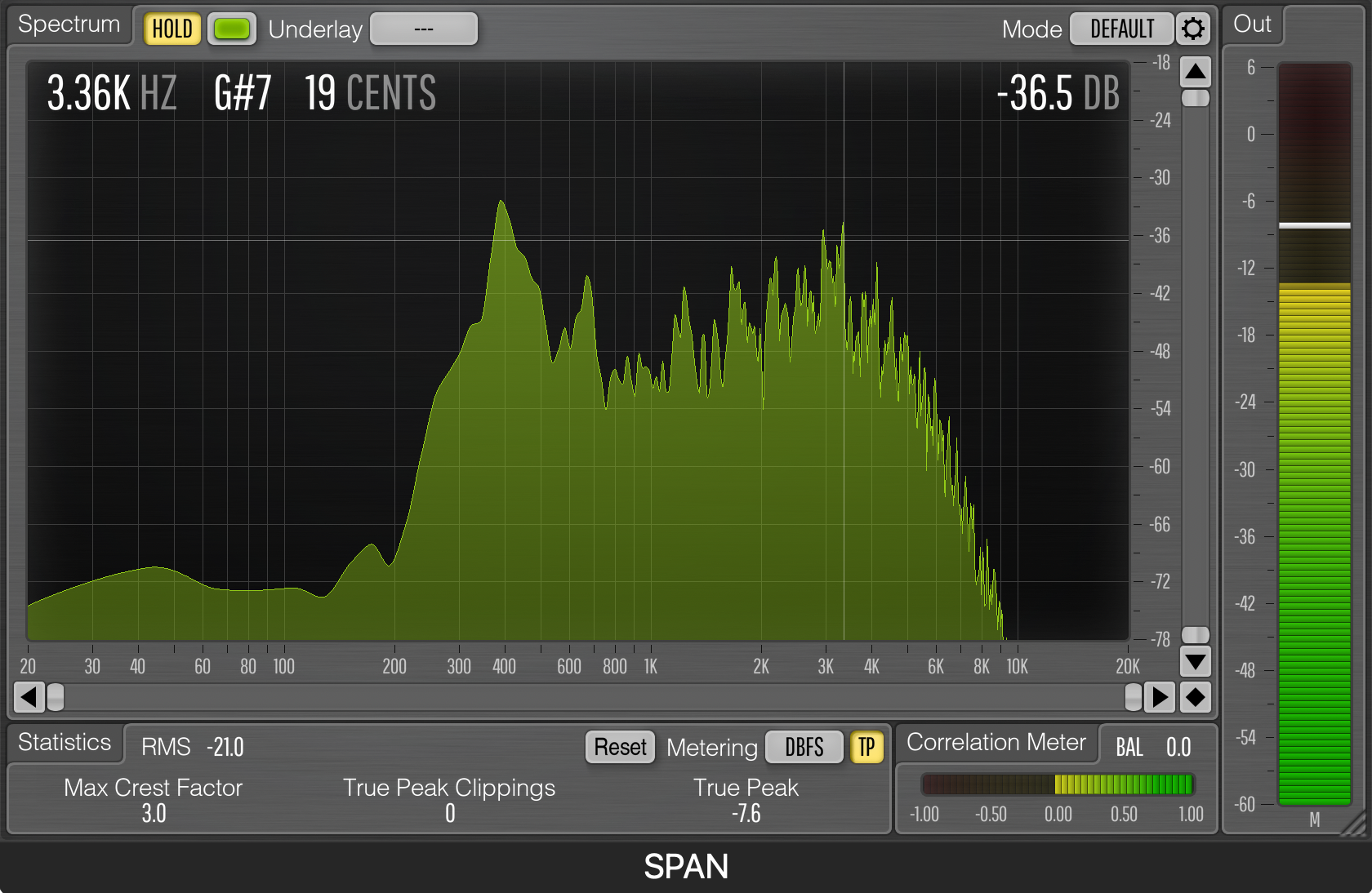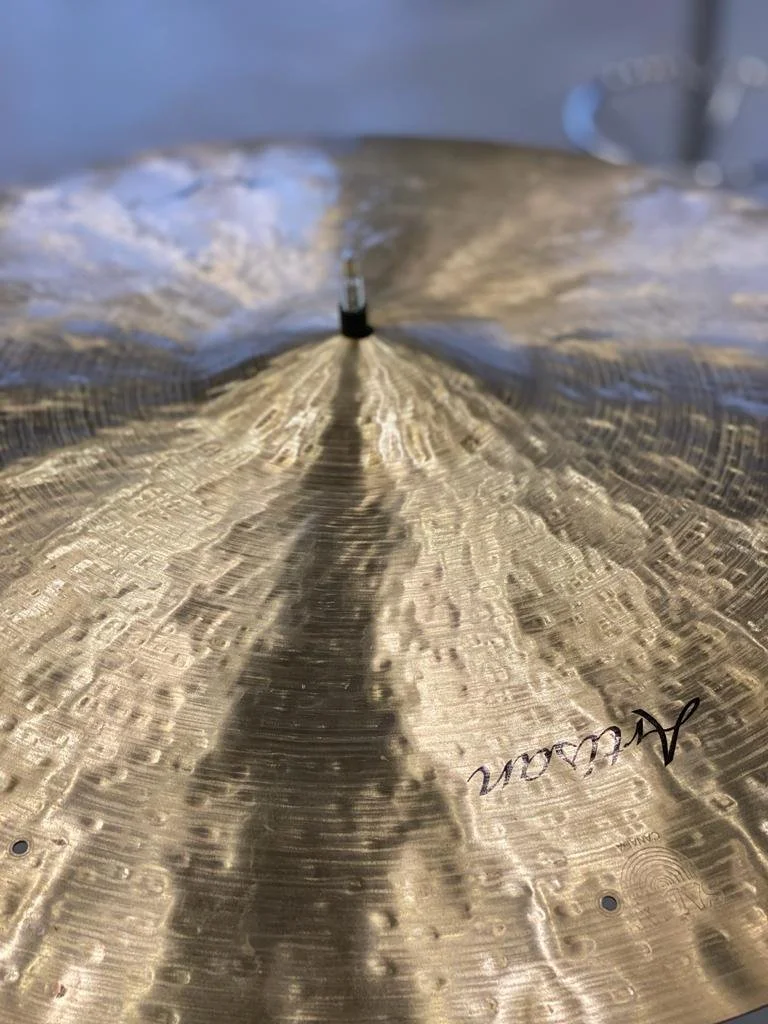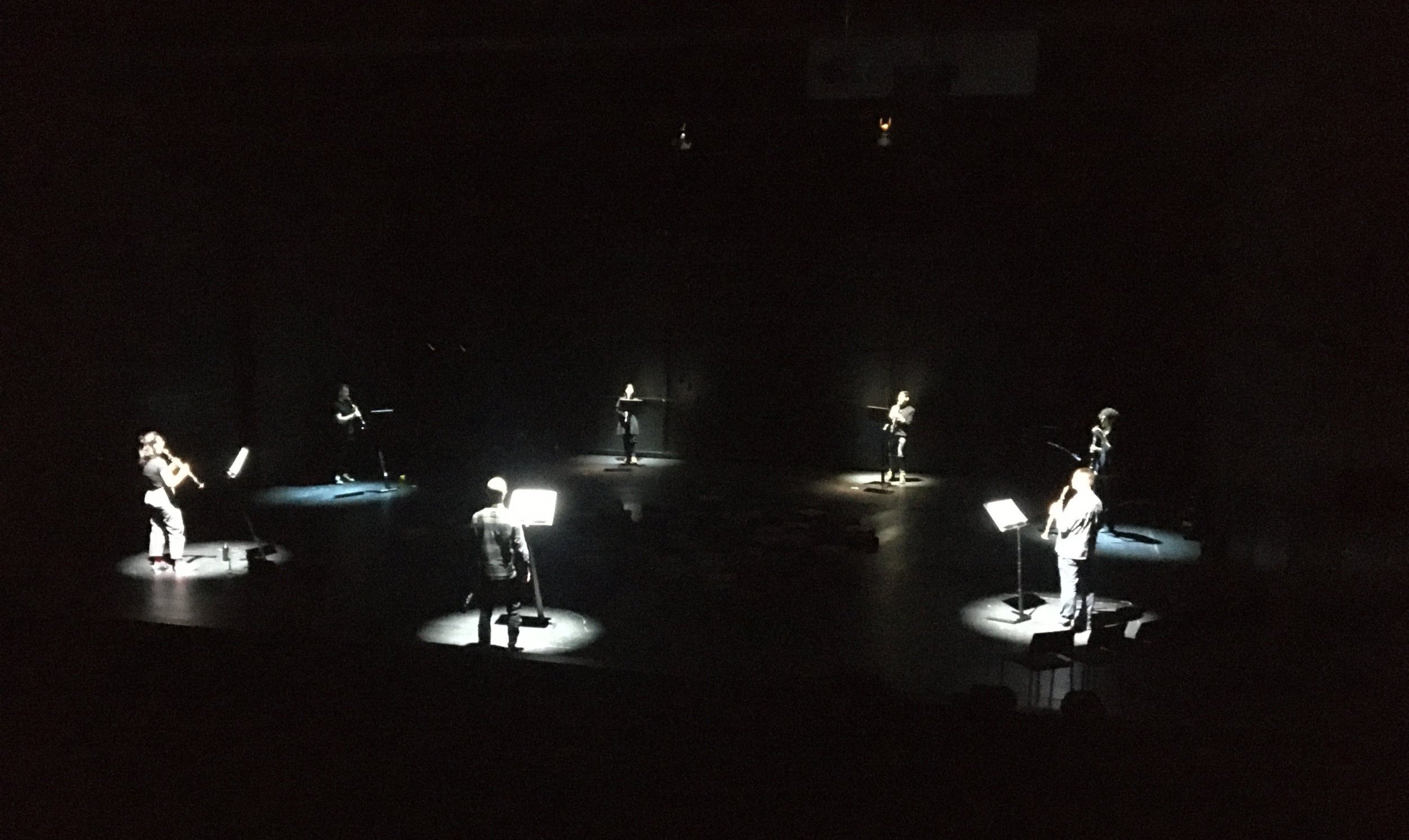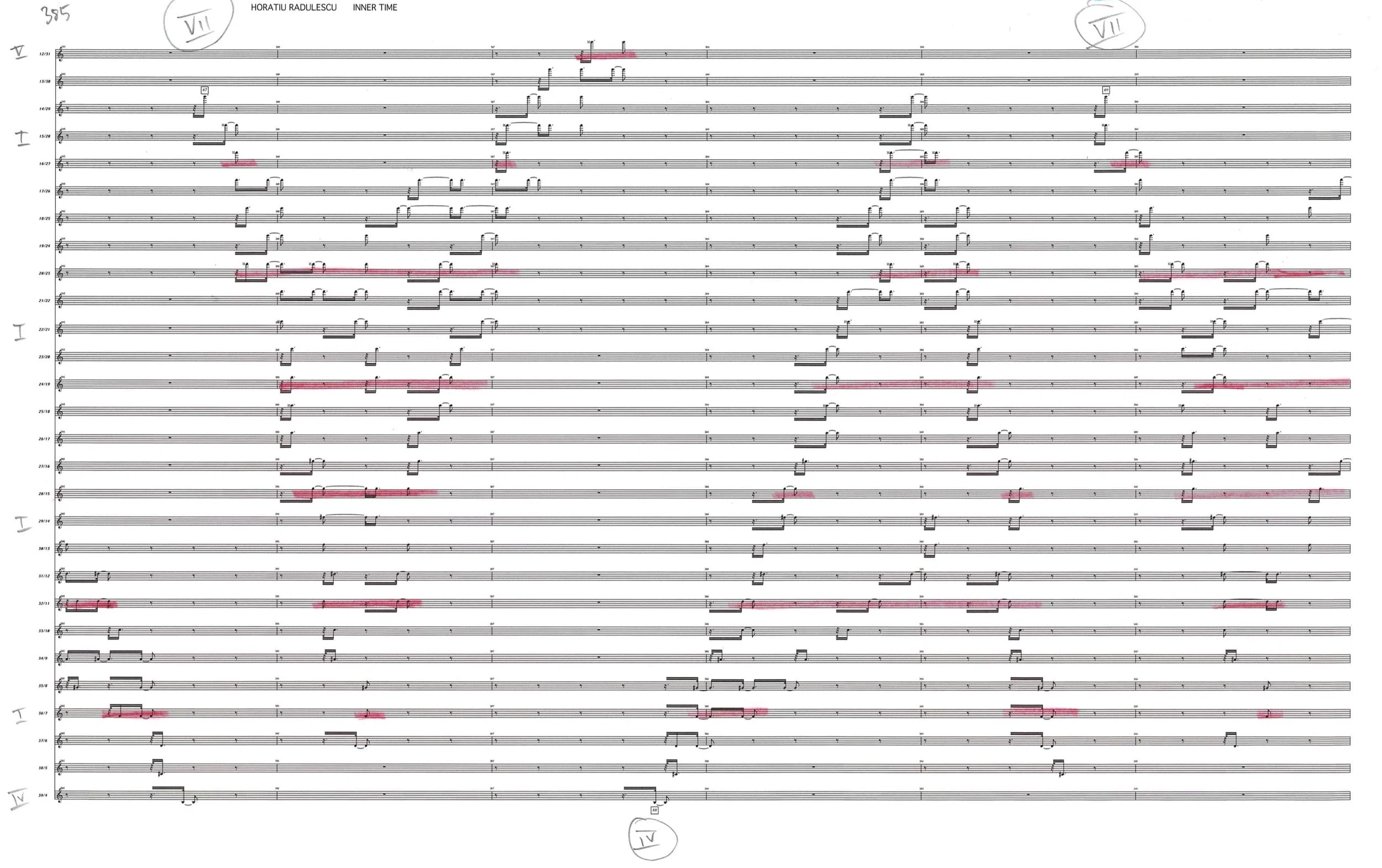JUHO LAITINEN
instrumentalist composer researcher teacher facilitator director
artist portfolio
THE GREAT LEARNING
Between 2020 and 2024 I directed an artistic research project built around a complete performance of Cornelius Cardew’s avantgarde music theatre work The Great Learning, with funding provided by Kone Foundation. This collaboration between Uniarts Helsinki and Tulkinnanvaraista forum gathered together some 2 900 participants in over 150 events.
The eponymous text by Confucius encourages personal and collective growth by way of sincere introspection, mutual compassion and striving for a restful and balanced stance “even in the presence of a tiger”. These principles were rigorously applied with two aims:
(1) to develope an experimental practise of rehearsing and performing experimental music. Theoretical, philosophical, psychologica, social, ethical and societal asepects of the work are to be considered equally important as the practical making of music.
(2) to facilitate equal and inclusive opportunities for art-making and learning for a wide range of people, regardless of prior training or expertise.
The project resulted performances of music, theatre and live art on a high artistic level. It led to the formation of Naarmu Ensemble that stays active beyond the project. The pedagogical interests are continued in a new monthly experimental music workshop open and free for all.
An extensive report (in Finnish) on the research can be found here.
DESCENT
In 2023 I recreated the original electro-acoustic process to make a new version of Phill Niblock’s cello piece Descent from 1978. The work consists of four downward glissandi spanning one octave that start and end at the same pitches but travel individually. The score specifies frequencies at every minute, thus implicitly indicating speeds of glissandi.
I first made a visualization of Phill’s number score. The second phase was to carve “acoustic lines” of the four individual parts, making continuous recordings of the individual sweeps on a Minimoog synthesizer, closely following the specifications in the number score. These audio tracks functioned as references for the cello recordings: in a recording studio I recorded the cello lines whilst listening to and closely following the reference recording. At this stage, instead of a “cerebral” mode of playing, I was concentrating on the haptic response of beating: when the pitches are exactly the same, the compound voice thins out. When the pitches are different, the interfering frequencies produce an audible beating.
how high the moon,
how deep is your love
Many of my compositions deal with the idea of gaining understanding about a specific musical phenomenon, with the assumption that such pedagogical processes can be transposed to more general philosophical ponderings.
In How high the moon, how deep is your love the highest possible low and the lowest possible high pitches are defined with vocal and/or instrumental glissandi. I am interested in how completing this exercise doesn’t seem to result in splitting the frequency spectrum into two opposing parts. Instead, an ambiguous and pliant liminal space between categories is established, a balancing force between extremes.
In terms of sensuality, I find pleasure in the two particular sounds created during the process: the resulting microtonal chords as well as the tentative, searching glissandi.
Violin and String Quartet
In October 2024 I presented – with violinists Mieko Kanno, Jukka Rantamäki and Pasi Eerikäinen and violist Pisku Ristiluoma – Morton Feldman’s Violin and String Quartet at Helsinki Music Centre.
This project was my third instalment of Feldman’s late works, the two previous ones being the Trio and Patterns in a chromatic field. I have wished to study how the music (like Samuel Beckett’s writing and Mark Rothko’s painting) seems to exist around borders and in-betweens: instead of gesture and narrative content, the focus is consistently on surface structures and materiality of sound.
Song books
Since 2016 I work on John Cage’s Aria, Concert for piano and orchestra, Song Books, WBAI and Winter Music as a pluralistic collage consisting of musical, visual and choreographic materials. Thus far 20 performances have taken place in Finland, the Netherlands, China, Slovakia and Estonia and have included instrumental, vocal and electroacoustic music, dance, sports and cinematography.
weiss/weisslich 21
Peter Ablinger’s weiss/weisslich is a series of works investigating noise as a totality of sound, “everything always”. No. 21, subtitled “Analytische Integration”, features an immersive cymbal roll and instrumental sounds tuned to the instrument’s resonant frequencies.
I created an electroacoustic version for enhanced control over pitch, dynamic and spatialization within this performative sonic sculpture.
The process begins with choosing an instrument, and with percussionist Antti Suoranta we went for a 22” Sabian Artisan with a luxurious, deep sound. I analyzed the cymbal roll’s frequency spectrum using Voxengo’s SPAN plugin within Logic Pro and identified 49 resonant peaks ranging from 47,5 to 10 500 Hz. I then created a synthesizer on Max/MSP that plays back these tones as sine waves. A midi fader controls the levels of each individual tone.
In performance, four to six speakers are set up pointing to the percussionist in the middle of the room, and the synthesized tones are faded in one by one over the course of 17 minutes. These organ-like sounds appear just at the threshold of audibility, enriching the dense and noisy spectral sound without adding a discreet element to it.
Inner Time
I directed a performance of Horatiu Radulescu’s Inner Time at Helsinki Music Centre in April 2022. The ensemble of seven clarinetists was assembled from professionals and students of Sibelius Academy and Helsinki Conservatory.
I have a long-term interest in rational tunings, spectral harmony and resonance. Radulescu’s take on these is unique and utterly fascinating, as described in the book Sound Plasma. Inner Time uses a spectrum of 42 partials of a low fundamental, up to the 82nd overtone. These pitches are evenly distributed among the ensemble so that each player has only six different pitches throughout the 56-minute duration of the work. In Radulescu’s thinking the rapid sequences of “narrow frequency bands” that the instrumentalists trigger act as filters that open to the overall sound plasma.
For this performance we used the conventionally scored material where the rhythms are written out in a somewhat rigid manner. A more “plasmatic” future version, utilizing the graphic score, would be highly interesting.



